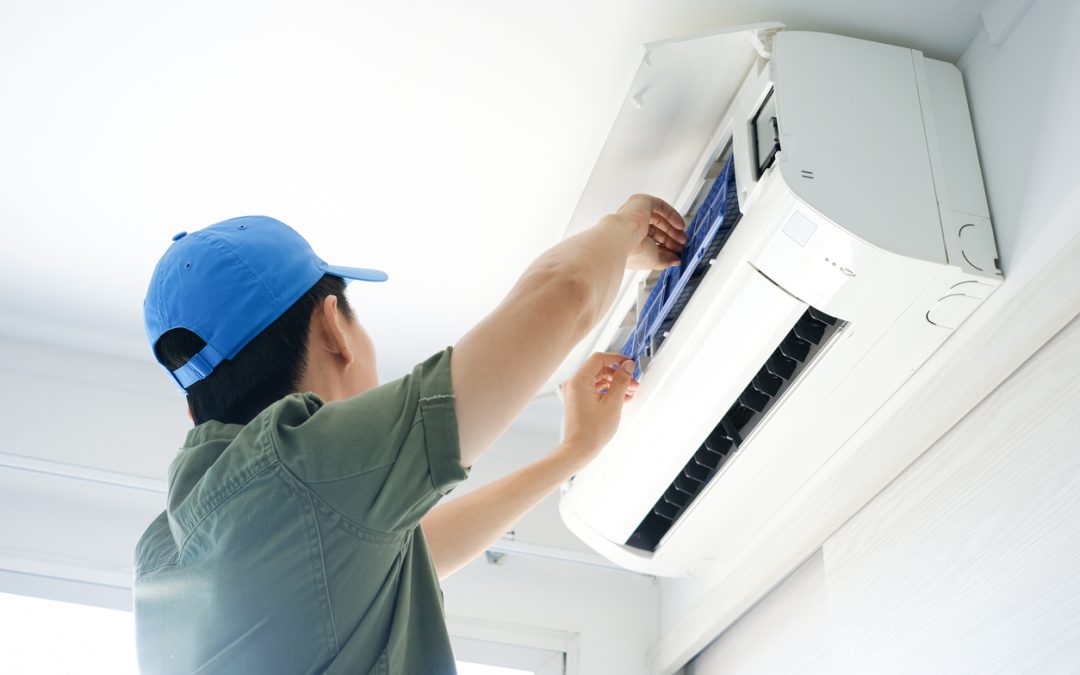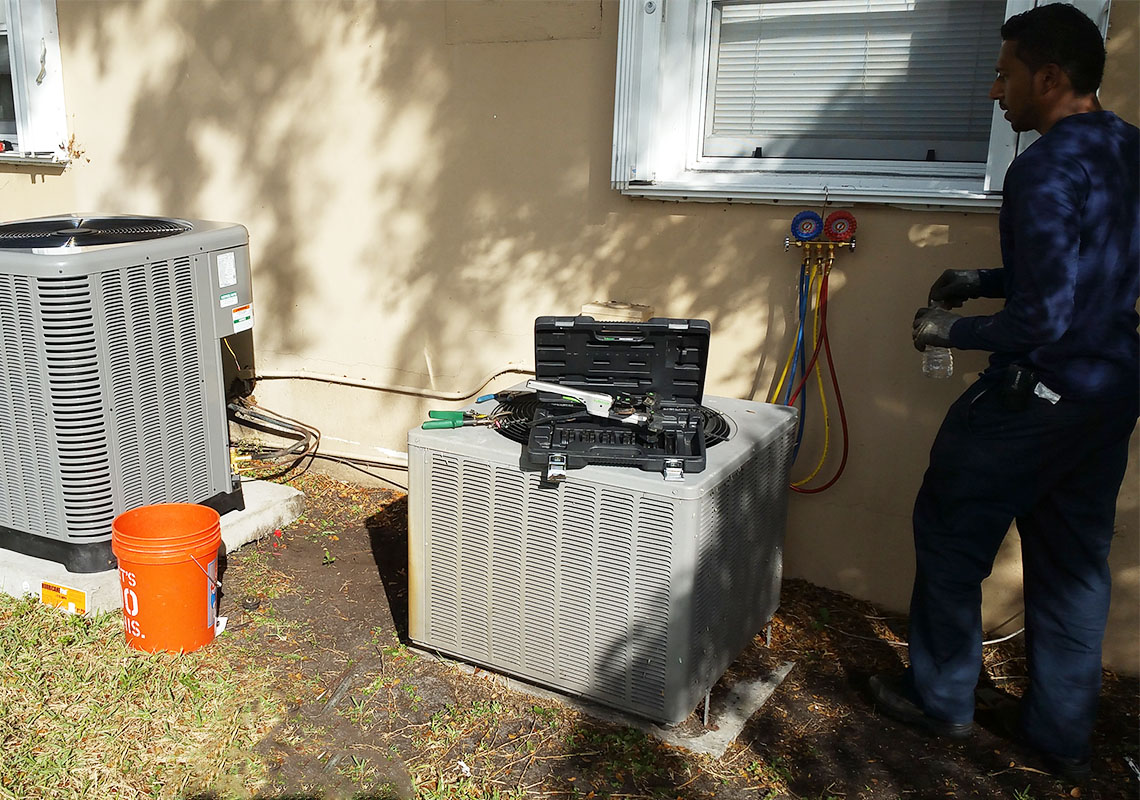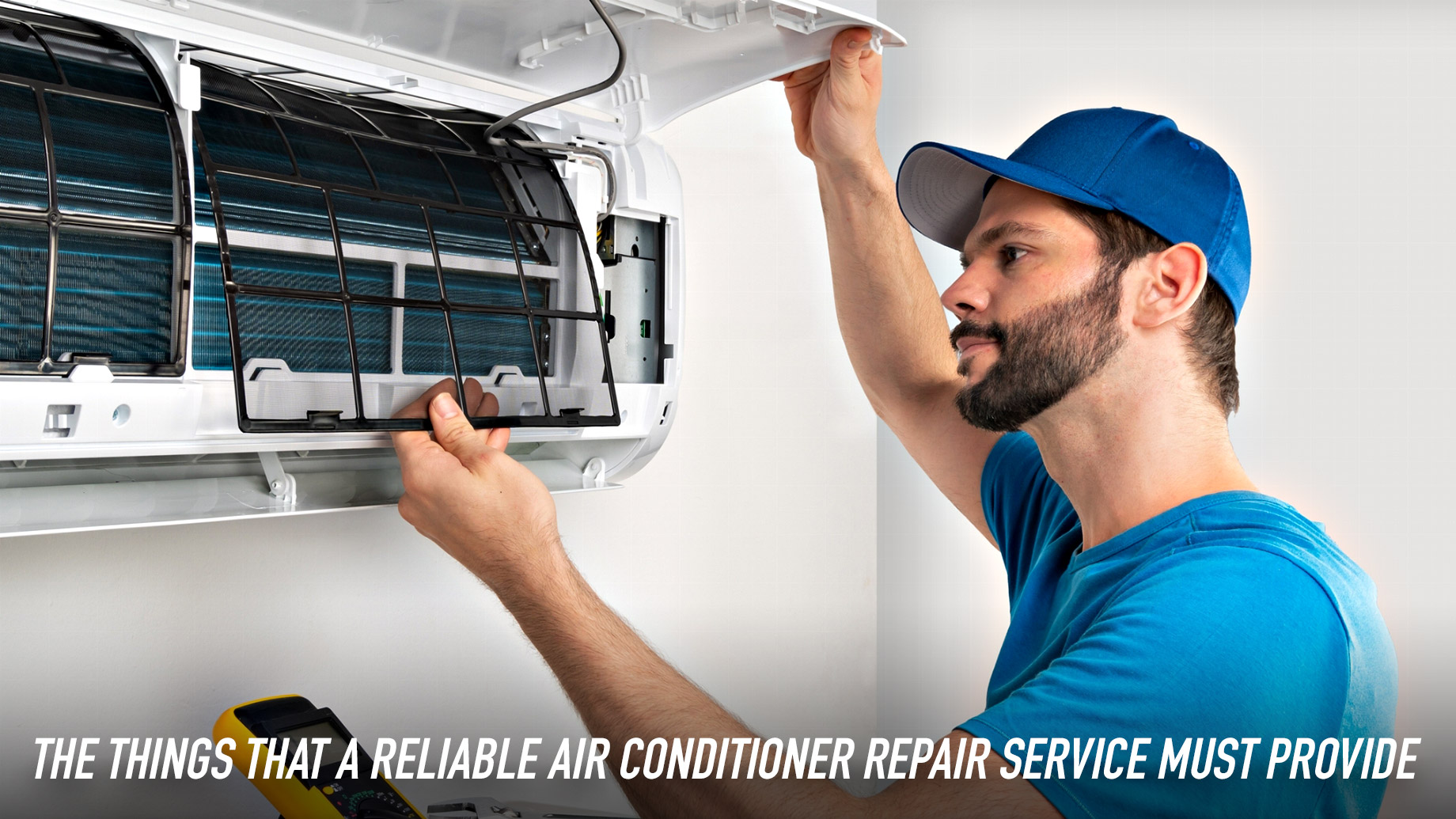AC System Replacement: Effective Environment Control Systems Are Vital For Indoor Convenience And Energy Cost Savings
Parts and Systems: The A/c Symphony
Ever question what genuinely manages the environment control in your residence or office? It's much more than just a box humming exterior. We're discussing a sophisticated interplay of parts, a veritable symphony of engineering created to preserve your comfort, come rain or shine, and even the most blistering heatwave. Comprehending these specific parts, and how they coalesce into a unified system, is vital for any homeowner or facility supervisor. Think about it like a human body: each organ has an important role, however it's their collective function that keeps us alive and thriving.
The Core Players: What Makes it Tick?

At the heart of most property and light business a/c setups, you'll find a number of key players. Do you truly understand what each one does? Let's break down the vital cast:
- Heater: The heating powerhouse, usually fueled by gas, lp, or electrical power. It warms the air that then flows throughout your space.
- Air conditioning system: The cooling champ, eliminating heat and humidity from indoor air through a refrigerant cycle.
- Ductwork: The circulatory system of your heating and cooling, a network of channels that disperses conditioned air to various rooms and returns stagnant air for reconditioning. Without correctly sized and sealed ducts, even the most effective system can falter.
- Thermostat: The brain of the operation, permitting you to set and maintain preferred temperature levels. Modern thermostats are capable of extraordinary feats, from Wi-Fi connection to learning your choices.
Beyond the Basics: Integrated Systems
While the heating system and air conditioner are often unique systems, they regularly share typical elements, forming an integrated system. The very same blower fan within the furnace typically propels air for both heating and cooling. This seamless combination is what makes a modern-day HVAC system so efficient and user-friendly. Consider the traditional circumstance: a sweltering summer season day offers way to a remarkably chilly evening. Your system, if effectively created, transitions effortlessly from cooling to heating, ensuring constant comfort without you raising a finger. It's really a marvel of contemporary comfort technology.
Improving Air Quality: More Than Simply Temperature
Beyond simply heating up and cooling, contemporary a/c solutions typically include components aimed at improving indoor air quality. Are you knowledgeable about the undetectable hazards lurking in your air? From allergens to contaminants, a good system actively fights them. This can include advanced filtering systems, humidifiers to add moisture in dry environments, or dehumidifiers to extract excess humidity. Some systems even incorporate UV lamps to eliminate air-borne pathogens. It has to do with developing a holistic environment, not simply a comfy temperature. What good is comfort if the air you breathe is subpar?
Heating and Cooling Principles: The Hidden Ballet of Comfort
Ever wonder why one room seems like a sauna while the next is an icebox, regardless of your thermostat's impassioned prayers? The answer often depends on a nuanced understanding of heating and cooling principles, a subtle dance of energy transfer that dictates our indoor convenience. It's not almost cranking up the air conditioning or stoking the furnace; it has to do with managing the circulation of heat, that consistent traveler constantly seeking balance. Believe of it like water streaming downhill-- heat always moves from warmer areas to cooler ones. This essential fact underpins every aspect of reliable a/c system operation, yet it's regularly neglected, leading to consistent pain and, honestly, squandered energy.
The Elusive Even Temperature Level
The most common aggravation house owners voice centers on uneven temperatures. You change the thermostat, hoping for a blanket of comfort, only to discover one room sweltering while another shivers. Why does this take place? Typically, it's a symptom of improperly sized or badly balanced ductwork. Envision a garden pipe attempting to water an entire lawn; some locations get soaked, others remain parched. If your ductwork isn't created to deliver the right volume of conditioned air to each space, hot and cold spots become an inevitable truth. A typical error is assuming that simply adding more vents will resolve the problem. In truth, it can intensify it by disrupting the delicate balance of atmospheric pressure within the system. A HVAC specialist worth their salt will carry out a Manual J load computation, a detailed analysis that figures out the accurate heating and cooling requirements of each space, taking into account elements like window size, insulation, and even the number of occupants. Without this fundamental action, you're basically flying blind.
Techniques of the Trade for Optimal Performance
- Zoning Systems: For supreme control and efficiency, consider a zoning system. This enables you to divide your home into distinct temperature zones, each with its own thermostat. No more heating or cooling empty rooms! It's like having multiple mini-HVAC systems tailored to your lifestyle.
- Duct Sealing: Leaking ducts are infamous energy burglars. A significant portion of conditioned air can escape through unsealed joints and holes before it even reaches your home. Professional duct sealing with mastic or specialized tape (not just normal duct tape, which fails rapidly) can drastically improve effectiveness and remove phantom drafts.
- Insulation's Function: Your home's insulation serves as the bouncer for heat, avoiding it from crashing the celebration in summer and getting away in winter season. Is your attic effectively insulated? Are your walls mere sieves for thermal energy? A simple inspection can reveal significant chances for enhancement.
- Fan Settings Matter: Many property owners just set their fan to "auto." While usually fine, think about running your fan continually on a low setting, especially in shoulder seasons. This helps flow air, minimizing temperature level stratification and making your home feel more consistently comfy, even if the main heating or cooling isn't actively running.

Understanding these basic heating and cooling concepts empowers you to make informed decisions about your home's convenience and energy consumption. It's not almost repairing a broken system; it's about managing a symphony of heat and coolness, ensuring every note is played ideal.
The Breath of Life: Ventilation and Air Quality
Ever walked into a room and felt that instant stuffiness, that sense of recycled air clinging to your lungs? It's a typical experience, a subtle yet consistent pain that frequently goes unaddressed. Numerous homeowners, focused on cooling and heating, overlook the important function of ventilation in their HVAC system. It's not practically temperature; it has to do with the really air we breathe. Believe of your home as a living organism; without correct airflow, it suffocates, trapping contaminants, irritants, and even stagnant odors. This oversight can lead to a host of indoor air quality problems, a silent assaulter eroding comfort and potentially impacting well-being.
Among the most substantial difficulties homeowners deal with in keeping exceptional indoor air quality centers on the accumulation of tiny airborne particles. These invisible invaders, ranging from allergen and pet dander to mold spores and unpredictable organic substances (VOCs) off-gassing from furniture, distribute constantly without appropriate air exchange. Think of trying to clean a dusty room by merely moving the dust around; that belongs to recirculating stagnant air without introducing fresh, filtered air. This continuous re-exposure can worsen breathing conditions, trigger allergic reactions, and usually lessen the feeling of a clean, healthy home. However what can be done to really clear the air?
Beyond the Fundamental Filter: Advanced Air Filtration
While standard heating system filters record larger particles, they often fall short when it comes to the really minute impurities. This is where the discerning homeowner thinks about updating their a/c system's air filtering. Have you thought about a MERV 13 or higher filter? These pleated powerhouses can trap a significantly higher percentage of air-borne particles, including bacteria and even some infections. The journey to pristine air does not end there. For a genuinely extensive approach, UV germicidal lights incorporated into your ductwork offer an additional layer of defense, neutralizing airborne pathogens as they go through. It resembles having a tiny bouncer for your air, making sure just the cleanest molecules make it into your home. And for those with persistent odor issues or chemical level of sensitivities, a whole-house triggered carbon filter can be a game-changer, taking in gaseous contaminants that even the finest particle filters miss. It's about proactive defense, not reactive relief.
- Inspect and change air filters quarterly, or more often if you have family pets or allergic reactions.
- Consider a whole-house humidifier or dehumidifier to manage indoor humidity levels, which can affect mold growth.
- Ensure proper sealing of ductwork to prevent unfiltered air from getting in the system.
- Use exhaust fans in bathroom and kitchens to eliminate wetness and cooking odors at their source.
Did you understand that merely opening windows for a few minutes every day, even in winter, can drastically improve indoor air quality by diluting contaminants? It's a basic, cost-efficient trick that numerous overlook. Furthermore, strategically placed indoor plants, such as spider plants or peace lilies, can serve as natural air purifiers, taking in particular contaminants from the air. While they won't replace a robust ventilation system, they use a quaint, green complement to your indoor air strategy. The goal is to create an environment where the air is not just comfortable in temperature level, but really stimulating to breathe.
Installation and Maintenance: The Unsung Heroes of Heating And Cooling Durability
Ever question why some HVAC systems purr like contented kittycats for years while others sputter and cough their dying breath far prematurely? The secret, dear reader, typically lies not in the initial purchase, but in the precise dance of installation and the diligent rhythm of maintenance. It's a tale as old as time, or a minimum of as old as a/c itself: a system, no matter how advanced, is only as great as its setup and subsequent care. A badly set up system can cause a cascade of concerns, from ineffective operation that drains your wallet quicker than a leaking faucet to premature component failure. Picture trying to run a marathon with uncomfortable shoes; you may end up, however not without considerable pain and possible injury. Your a/c system faces similar misfortunes when not properly incorporated into your home's unique thermal envelope.
Think about the airflow. A common oversight throughout installation, and one that triggers unknown headaches, focuses on appropriate ductwork sizing and sealing. It resembles trying to consume a milkshake through a tiny, punctured straw-- you're putting in a lot of effort for extremely little benefit. Small ducts limit airflow, forcing the blower motor to work harder, consuming more energy, and reducing its life expectancy. Leaky ducts, on the other hand, resemble tossing money out the window, actually, as conditioned air leaves into unconditioned areas. Did you understand that up to 30% of a home's heating and cooling energy can be lost due to leaking ducts? It's a shocking figure, frequently neglected, and easily read more fixed with correct sealing methods using mastic or specific metal tape, not simply the lightweight cloth-backed duct tape everyone erroneously calls "duct tape."
The Rites of Routine Upkeep
You have actually got a perfectly installed system. Now what? The journey does not end there; it merely starts a new chapter: maintenance. Think about your a/c system as a high-performance automobile. Would you ever skip oil modifications or tire rotations? Naturally not, because you comprehend the long-lasting effects. Similarly, neglecting your HVAC system's annual tune-ups is a gamble you're unlikely to win. These aren't just arbitrary appointments; they are important preventative measures. A service technician checks refrigerant levels (the lifeline of your system), cleans up coils (those unsung heroes of heat exchange), checks electrical connections (preventing potential fire dangers), and lubricates moving parts. It's throughout these visits that little concerns, easily corrected, are caught before they bloom into pricey breakdowns. An unclean evaporator coil, for instance, can decrease efficiency by 5-10%, forcing your system to work harder to accomplish the preferred temperature level. It's like trying to breathe through a blocked nose; everything becomes more hard.
Here are a couple of expert insights to keep your system humming:

- Filter Skill: Modification your air filter every 1-3 months, especially if you have family pets or allergies. A stopped up filter is a significant airflow impediment, reducing effectiveness and putting pressure on your system.
- Clear the Condensate Drain: Regularly put a cup of distilled vinegar down your condensate drain line. This avoids algae and mold growth that can clog the line, resulting in water damage and system shutdown.
- Outside System TLC: Keep the area around your outdoor condenser unit clear of debris, leaves, and thick plant life. A foot or more of clearance on all sides ensures correct air flow, which is vital for effective heat dissipation.
- Thermostat Knowledge: Consider upgrading to a programmable or clever thermostat. These gadgets can learn your practices and optimize temperature level settings, conserving energy and extending the life of your system by lowering unneeded cycling.
Remember, a little proactive effort in installation and upkeep goes a long method in ensuring your a/c system provides constant comfort and effectiveness for several years to come. It's not practically comfort; it has to do with safeguarding your financial investment and guaranteeing assurance.